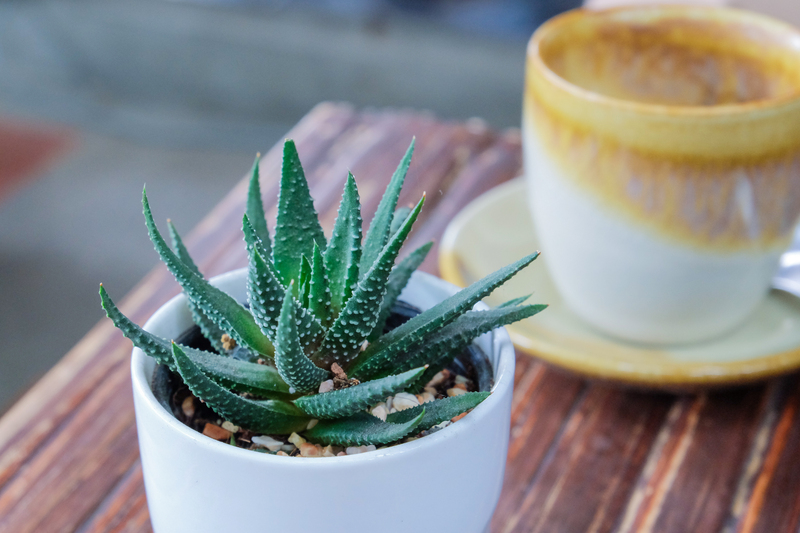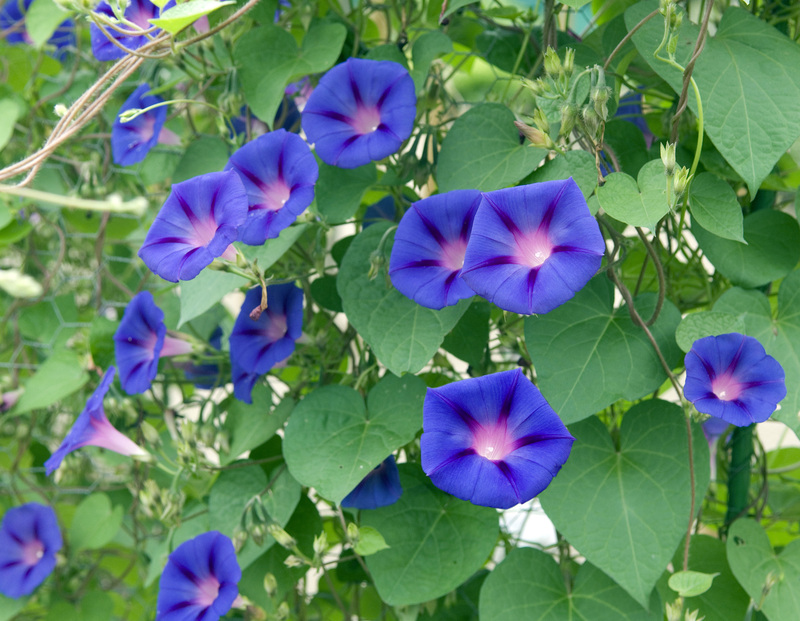Elevate Your Deck with Tall-Potted Plants Designed for Natural Privacy Screens
Are you looking for creative ways to gain privacy, enhance beauty, and enjoy the serenity of your outdoor space? One of the most effective, eco-friendly, and visually appealing solutions is to use tall-potted plants designed for natural privacy screens on your deck. This not only adds a lush, green look to your environment but also offers noise reduction, shade, and even a habitat for pollinators. Read on to discover how you can transform your deck into a private oasis using these thriving natural screens.

Why Choose Tall Potted Plants for Deck Privacy?
Tall-potted plants offer a flexible, sustainable alternative to traditional privacy panels or fences. Their adaptability allows you to achieve a tailored solution no matter the size or style of your deck. Let's dive into the benefits that tall plant privacy screens provide:
- Non-permanent: Easily rearrange or transport plants as your needs change.
- Visual Variety: Enjoy diverse colors, textures, and seasonal blooms not possible with standard fencing.
- Environmental Benefits: Purify the air, attract pollinators, and provide a cooling effect.
- Noise Reduction: Lush green foliage can absorb and deflect urban or neighbor noise.
- Personalized Style: Choose plant species and containers that match your unique aesthetic.
- Modular Privacy: Target specific areas for privacy rather than enclosing an entire space.
Best Tall Potted Plants for Deck Privacy Screens
To elevate your deck privacy, select plants that are naturally tall, grow upright, and thrive in containers. Here are some top choices to consider:
Bamboo
Bamboo is synonymous with privacy. Its rapid growth and dense foliage create an immediate screen. Opt for clumping varieties (such as Bambusa or Fargesia) that are non-invasive and easy to manage in pots. Advantages:
- Fast-growing with an impressive vertical reach
- Evergreen for year-round privacy
- Minimal maintenance when confined to containers
Arborvitae (Thuja species)
Arborvitae remains one of the most popular privacy plants due to its columnar shape and resilience. These evergreens are simple to prune, maintain, and display in large planters. Benefits include:
- Year-round screening with beautiful green foliage
- Tolerates tight spacing and container living
- Low susceptibility to pests and diseases
Italian Cypress (Cupressus sempervirens)
If you want a modern look, Italian cypress offers dramatic upright form perfect for natural screening. These trees thrive in well-draining pots and warm climates. Highlights:
- Tall, slender growth adds striking architectural interest
- Dense evergreen foliage blocks prying eyes
- Tolerates pruning for a neat appearance
Privet (Ligustrum species)
Privet combines lush growth and the ability to withstand heavy trimming. It's a popular choice for topiaries and privacy borders, making it suitable for potted screens. Notable qualities:
- Fast-growing and fills gaps quickly
- Can be shaped for a formal or informal look
- Resistant to air pollution
Boxwood (Buxus species)
Boxwood lends classic sophistication to your deck with its dense, dark foliage and tolerance for containers. While not the tallest option, you can combine it with taller pots or raised planters for extra height. Main features:
- Response to regular pruning for crisp shapes
- Evergreen foliage for year-round interest
- Excellent disease resistance
Ornamental Grasses
Feather Reed Grass (Calamagrostis acutiflora), Maiden Grass (Miscanthus sinensis), and Pampas Grass (Cortaderia selloana) offer stunning movement and height. When planted in large containers, these grasses can soar above six feet. Advantages include:
- Graceful, swaying blades create a soft, natural screen
- Low maintenance and drought resistant
- Yearly plumes add ornamental interest
Ficus (Fiddle Leaf Fig or Rubber Plant)
For a tropical-inspired barrier, large potted ficus species offer broad leaves and dense growth. Fiddle leaf figs and rubber plants (when protected from frost) excel as privacy plants for decks and patios. Key benefits:
- Large, glossy leaves block views effectively
- Easy to maintain in suitable climates
- Great for adding a modern, lush ambiance
Design Tips: Achieving Maximum Privacy and Style
Designing your deck privacy screen with tall potted plants isn't just about picking the right species. How you arrange, plant, and maintain them dramatically impacts effectiveness and beauty.
1. Use Matching or Coordinated Containers
Uniform planters deliver a streamlined look, while a mix of colors and textures can create a vibrant, eclectic atmosphere. Choose containers with adequate drainage and insulation to protect roots from temperature extremes.
2. Stagger Heights and Positioning
Vary the plant heights and place taller pots behind shorter ones to craft a layered, dynamic barrier. This not only enhances visual interest but also provides fuller coverage from different sightlines.
3. Incorporate Vertical Planters
Supplement tall-potted privacy plants with vertical wall planters or trellises. These allow you to add vining species like clematis, jasmine, or sweet peas that climb up, further boosting privacy.
4. Mix Evergreens and Flowering Plants
Blend evergreens with flowering shrubs or annuals for year-round color and privacy. Plants such as hydrangea, rose of Sharon, or hibiscus provide seasonal blooms alongside structural evergreens like arborvitae or boxwood.
5. Plan for Mobility
Install rolling plant caddies or casters under heavy pots. This allows you to move plants effortlessly as the sun shifts or if you need to alter your privacy configuration.
6. Consider Sunlight and Wind Exposure
Choose plants suited to the light and wind conditions of your deck. Some tall plants require protection from wind gusts, while others need full sunlight to flourish. Take note of microclimates created by walls and railings when placing your containers.
7. Regular Maintenance for Lasting Appeal
To keep your potted privacy screen healthy and attractive:
- Water consistently, as containers dry out faster than ground soil
- Provide slow-release fertilizer during the growing season
- Prune regularly to maintain desired shapes and height
- Rotate pots periodically for even growth
Sustainable and Eco-friendly Benefits
Natural privacy screens aren't just good for you--they're also beneficial for the environment. Here's how tall potted plants make a difference:
- Improve air quality by absorbing carbon dioxide and pollutants
- Support biodiversity by attracting birds, bees, and butterflies
- Reduce energy bills by providing shade and lowering cooling needs
- Offer habitat and food for beneficial insects
- Cut down on waste from fence materials or plastic privacy screens
Creative Container Ideas for Stunning Deck Screens
The right container can elevate both your plants and your entire outdoor decor. Consider these creative solutions:
- Self-watering planters: Great for busy lifestyles and consistent hydration.
- Lightweight fiberglass pots: Easy to move and weather-resistant for rooftop decks.
- Upcycled barrels or crates: Bring rustic charm and sustainability.
- Deep troughs: Accommodate root systems of larger trees and shrubs.
Remember: Always choose containers with drainage holes and line their bases with stones or broken pottery to prevent root rot.
Step-by-Step Guide: Planting a Tall-Potted Privacy Screen
Ready to get started? Follow these steps to create your deck privacy screen with tall potted plants:
- Choose Your Plants: Select species based on height, sun requirements, and climate hardiness.
- Pick the Right Containers: Ensure pots are deep and wide enough for mature root systems.
- Prepare Potting Mix: Use high-quality, well-draining soil mixed with compost for nutrition.
- Plant with Care: Position the plant at the correct depth, tamp down soil, and water thoroughly.
- Arrange on Your Deck: Place containers where they provide optimal screening and adjust as needed.
- Maintain Regularly: Water, fertilize, and prune per plant's needs to keep your screen lush and healthy.
Addressing Common Concerns: FAQs
Will tall potted plants survive the winter?
Evergreen species such as arborvitae or boxwood are hardy but may need extra protection in harsh climates. Use insulated pots, move containers to sheltered locations, and wrap with burlap if necessary.
How often should I water my privacy plants?
Container plants dry out faster than in-ground plants--water when the top inch of soil feels dry. In hot weather, watering daily may be required.
Can I use fruit trees for privacy?
Absolutely! Dwarf fruit trees like citrus, columnar apples, or fig trees can be grown in pots. They provide screening plus the added bonus of fresh fruit.
What if my deck is shaded?
Opt for shade-tolerant species like holly, yew, or camellia. Ferns and hostas also add lushness in low-light areas, though they may be shorter.

Inspiration: Stunning Deck Privacy Screens in Action
Here are some design ideas to spark your creativity and help you craft the perfect natural privacy screen with tall-potted plants:
- Modern Minimalism: Use sleek black planters with Italian cypress and horsetail reed for a striking contrast against wooden decking.
- Urban Jungle: Mix palms, ficus, and monstera in large ceramic pots for a lush, tropical retreat in the city.
- Cottage Charm: Blend bamboo, flowering hydrangea, and climbing clematis in mismatched vintage containers for a cozy, whimsical look.
- Edible Screens: Plant grapes on trellises alongside potted rosemary and lavender for fragrance, flavor, and seclusion.
Conclusion: Transform Your Deck into a Private Sanctuary
Using tall-potted plants for natural privacy screens isn't just a trend--it's a timeless, practical approach to upgrading your deck. Whether you seek seclusion from neighbors, a wind buffer, or a stunning living wall, these botanical barriers offer a blend of function and beauty that traditional methods can't match.
Start planning your personalized privacy screen today by choosing the right plants, containers, and layout for your space. With minimal effort, you can enjoy a tranquil, private, and aesthetically pleasing deck that's the envy of the neighborhood.
Elevate your deck with nature's finest architects--and savor your own slice of outdoor paradise every single day!